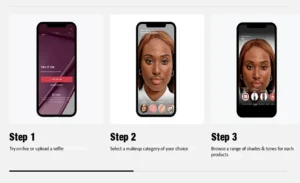Forget breadcrumbs and basic marketing ideas. We’re revealing 9 proven e-commerce marketing strategies that business giants (Amazon, Nike, and more) use to dominate the online game. You will also know how to adapt these strategies to turn your store from “zero” to “hero.”
So, grab your marketing helmet and buckle up, because we’re about to reveal some serious business magic!
Table of Contents
ToggleList of Proven E-commerce Marketing Strategies
| Strategy | Benefits | Implementation | Brands |
| Hyper-Personalization | Engages customers, boosts conversion, builds loyalty | AI tools for segmentation, dynamic recommendations | Amazon, Spotify, Netflix |
| Content that Converts | Enhances brand recognition, SEO, and conversion | Varied high-quality content, storytelling | Casper, Dollar Shave Club |
| SEO Strategy | Increases organic traffic, credibility | Keyword optimization, quality content, on/off-page SEO | – |
| Influencer Collaboration | Expands brand exposure, boosts engagement | Collaborate with micro-influencers, genuine content | Glossier, Gymshark, Nike |
| Omnichannel Marketing | Enhances customer experience, uniformity | Unified brand storyline, omnichannel care | Starbucks, Sephora, Adidas |
| Augmented Reality | Lowers purchase barriers, boosts engagement | Collaborate with AR developers, prioritize user-friendliness | Warby Parker, IKEA Place, L’Oréal |
| Voice Search Optimization | Enhances accessibility, search rankings | Research conversational keywords, optimize content | Domino’s |
| Data-Driven Decisions | Enhances campaign performance, boosts ROI | Analytics, A/B testing, marketing automation | Amazon |
| Community Cultivation | Boosts brand loyalty, organic growth | Online communities, interactive events | GoPro, Lush, Nike |
9 Effective E-commerce Marketing Strategies to Become A Bigger Brand
Forget breadcrumbs and basic marketing. Today, we’re cracking the code of the e-commerce fortress, where the big brands reign supreme. Let’s start!
1. Hyper-Personalization
Brands are getting pretty good at guessing what shoppers will buy next. They use AI and data analysis in crafting experiences that satisfy yet spring into life.
Aiming at individually customized product recommendations, personalized email newsletters, and chatbots teeming with useful ideas.
The focus is on creating individualized interactions rather than generic marketing messages. All these features bring it among the best e-commerce marketing strategies.
Benefits
- Better customer engagement
- Higher conversion rates
- Stronger brand loyalty
Implementation Strategies
- Use AI tools to segment customers by demographics, purchase history, and browsing patterns.
- Implement dynamic recommendations for products on web pages and in follow-up emails for abandoned carts.
- Customize email campaigns with deals and content that match customer preferences.
Brands That Use This Strategy
- Amazon
- Spotify
- Netflix
2. Content that Converts
Building strong brand connections can dramatically boost customer loyalty. Over half (57%) increase spending, while 76% choose the brand over rivals.
Brands that do well in content marketing aren’t just generating blog posts, they’re changing the rules of the game.
Their content ranges from compelling video materials and engaging quizzes to comprehensive white papers that not only educate and entertain but convert people, too.
They move beyond product features to weave narratives, tap into emotions, and truly engage with their audience. For brands, it’s more like “Show, Don’t Tell”.
Benefits
- Boosted brand recognition
- Enhanced SEO
- Greater customer engagement
- Increased conversion rates
Implementation Strategies
- Produce a variety of high-quality content, from detailed tutorials and quizzes to captivating videos.
- Harness storytelling and create emotional connections to strengthen brand loyalty.
- Offer a mix of content types such as articles, infographics, and e-books to meet the diverse preferences of your audience.
Brands That Use This Strategy
- Casper: Uses sleep advice and expert interviews.
- Dollar Shave Club: Known for its witty blog content.
3. Ecommerce SEO Strategy
SEO is an important weapon to improve the online popularity and visibility of a brand. By optimizing your website and content, you can make search engines like Google recognize your site more easily–and rank it higher! When implemented properly, SEO for E-commerce will bring more traffic without the cost of paid advertising.
Benefits
- Increased Organic Traffic
- Credibility and Trust
- Better User Experience
- Insight into Customer Behavior
Implementation Strategies
- Keyword Research and Optimization: It is essential to incorporate relevant keywords into your content, to make sure that your pages rank in those words specifically sought by your audience.
- Content Quality and Relevance: Producing high-quality, relevant content at regular intervals will create a credible authority and keep users returning again and again.
- On-Page Optimization: This comprises optimizing title tags, meta descriptions, and headings–all factors necessary for both search engine positioning as well as good user experience.
- Off-Page Optimization: Being able to get links from high-quality websites. It will indicate to search engines that you are an important resource — and that can help the rankings of your e-commerce website.
- Technical SEO: Ensure your website is not only optimized for search engines but also has a short load time, a mobile-friendly design, an SSL connection, and structured data. All these factors contribute to better ranking.
Don’t have ideas or time to do effective SEO? Don’t worry
Explore our affordable SEO packages to ensure optimal visibility and profitability.
4. Influencer Collaboration
Today, savvy brands are rallying behind micro-influencers and industry experts who understand their audience.
The partnerships enhance integrity, create credibility, and direct specific market segments to company products.
It’s a strategy focused on synergy with voices that epitomize the brand, transforming them into enthusiastic brand ambassadors.
Benefits
- Expanded brand exposure
- Robust engagement on social media platforms
- Enhanced credibility and consumer trust
- Precision in driving traffic
Implementation Strategies:
- Work with micro-influencers and field-specific experts who have the same audience demographic as you.
- Engage in genuine content collaborations like reviews, how-to videos, or product giveaways that resonate with influencers’ followers.
- Use affiliate links and promotional codes that are traceable. It will help the consumer track the effectiveness of influencer marketing efforts.
Brands Utilizing This Strategy
- Glossier: Effective micro-influencer collaborations
- Gymshark: Leveraging fitness influencers
- Nike: Strategic partnerships with athletes
5. The Omnichannel Marketing
Customer-oriented marketing is what major brands are all about. Whether they access a brand’s website, mobile app, social media, or physical store, they can expect a fluid and uniform experience called omnichannel marketing.
At the heart of this approach is the recognition of people’s needs and memory of their preferences. So, ensure each interaction, on various levels, strengthens your integrated, impactful brand story. Marketing efforts today must be integrated and not fragmented.
Benefits
- Enhanced overall customer experience
- Stronger uniformity across the brand
- Smooth engagement over multiple channels
- Increased rates of purchase completion
Implementation Strategies
- Create a unified brand storyline and the same user experience on all platforms, including your website, app, social media, and physical locations.
- Omni-channel customer care that provides help via email, live chat, phone, and so on.
- Using a variety of cross-promotional strategies, SMS reminders can be used to recover abandoned shopping carts.
Brands Utilizing This Strategy
- Starbucks: The interconnection between mobile ordering and their rewards program is exemplary.
- Sephora: Offers cohesive beauty consultations across channels.
- Adidas: Maintains integrated inventory management solutions that unify online and offline stocks.
6. Augmented Reality: Try Before You Buy, in Your Living Room
By presenting virtual fits, new forms of augmented reality (AR) are taking e-commerce websites to a new level.
Customers can preview products, including putting them into their room or even get a feel for how an article of furniture would look in their living room.
The technology of AR substantially eliminates anxiety while simultaneously deepening user engagement and conversion rates
Benefits
- Lowered Purchase Barriers
- Boosted Engagement
- Amplified Conversion Rates
- Refined Product Visualization
- Distinct Branding Prospects
Implementation Strategies
- Collaborate with AR Developers: Partner with AR technology firms to forge tailored AR experiences that complement your merchandise.
- Target Vital Product Groups: Focus initially on categories such as apparel and furniture, where visual representation critically impacts buying decisions.
- Prioritize User-Friendliness: Enhance your website and mobile application with uncomplicated and navigable AR functionalities.
- Market Your AR Capabilities: Utilize product detail pages, social media promotion, and email campaigns to broadcast your AR features.
E-commerce Brands Utilizing this Marketing Strategy:
Warby Parker: Provides a virtual try-on utility allowing customers to preview various eyeglass styles on their faces.
IKEA Place: The AR app empowers users to position furniture items to scale within their actual living spaces, streamlining design choices.
L’Oréal: With their AR makeup application feature, consumers can experiment with a myriad of cosmetic hues and styles in a virtual setting.
7. Voice Search Optimization
Voice search optimization is becoming a central focus as more individuals rely on speaking to their devices for information and purchases.
Big brands are taking heed by adapting their digital content to be more voice search-friendly, utilizing natural, conversational language and long-tail keywords that align with how real people articulate queries.
Benefits
- Enhanced Accessibility.
- Higher Search Rankings
- Better User Experience
- Enable hands-free shopping
- Creating more personalized interactions.
Implementation Strategies
- Conversational Keywords Research: Determine the long-tail phrases and everyday expressions your audience uses to express their feelings and thoughts in spoken questions.
- Conversational Tone Optimization: Convert your homepage, frequently asked questions (FAQs), and merchandise descriptions into sentences that echo normal conversational patterns.
- When it comes to Structured Data Utilization, be sure you are using schema markup to help search engines better understand your content and deliver it prominently, in voice search.
- Build conversational artificial intelligence experiences that understand the customer’s needs, pull items based on purchase history in the past, and make a payment without lifting a finger. Test it once and see the results in an instant.
- Testing and Analytics: Regularly check the performance of voice search and see which phrases and accompanying information draw the most traffic. Over time this data can help you improve your optimization tactics.
E-commerce Brands Utilizing this Marketing Strategy
Domino’s: Customers can order pizza through voice-enabled devices simply by speaking.
8. Data-Driven Decisions
These days, major brands have chosen to implement data-driven e-commerce marketing strategies with the hope of transforming and improving performance in their campaigns.
By rigorously tracking details such as CTRs and customer LTV, these companies harness the power of data to guide their every decision and steer their marketing toward new heights.
Benefits
- Enhanced Campaign Performance
- Efficient Budget Allocation
- Informed Decision-Making
- Boosted ROI
Implementation Strategies
Analytics Deployment: Employ advanced technologies for tracking web traffic, user engagement, conversion rates, and customer value metrics.
Systematic A/B Testing: Get up to speed through experimentation on different assets and campaigns to find out which works best
Marketing Automation Integration: Integrate systems that provide personalized user experiences and streamline the workflow of your campaigns.
Brands Utilizing These Strategies
Amazon: Uses dynamic pricing algorithms that adjust product prices in real time based on supply, demand, and consumer behavior.
9. Community Cultivation
Turning customers into brand ambassadors is strategic. This is the way to have a community of people who are committed to your brand.
Ordinary customer interactions are transformed into relationships that make people want to tell their friends about you, which is the essence of voluntary marketing.
Benefits
- Enhanced Brand Loyalty
- Organic Customer Growth
- Useful Customer Feedback
- Magnified Brand Message
Implementation Strategies
- Develop Online Communities: Forums and social media groups where customers discuss experiences and connect through other things related to their favorite brands.
- Engage with Interactive Events: Hold events and competitions to get people involved with your community.
- Harness User-Generated Content: Get word of mouth by filming your products for people to use, and other ways to enjoy them. Motivate customers to share their content featuring your products, posting this on your platforms as a way to validate and reward them.
Brands Utilizing This Strategy
- GoPro: Encourages users to upload videos captured with their cameras, providing a platform for showcasing their adventures.
- Lush: Has an engaged digital community where beauty enthusiasts can discuss products and ethical beauty practices.
- Nike: Offers running clubs and fitness challenges, fostering a supportive network of health-conscious brand ambassadors.
What are E-Commerce Marketing Strategies?
The most effective E-commerce marketing strategies are
- SEO
- Influencer Marketing
- Community cultivation
- Data-driven decisions
- Voice search optimization
Wrapping Up
Don’t be afraid to try new things! Big brands aren’t big for no reason. They’re constantly experimenting; testing, and tweaking their strategies.
Don’t be afraid to launch a risky campaign. If it flops, take a deeper look at your data, figure out why, and pivot if needed.
Everybody makes mistakes, even the biggest brands. Their willingness to learn and adapt is the only reason they’re able to pull so far ahead of the curve.
Remember, these are just e-commerce marketing strategies for your creativity. Adapt these to your unique brand and audience, experiment, iterate, and most importantly have fun!










